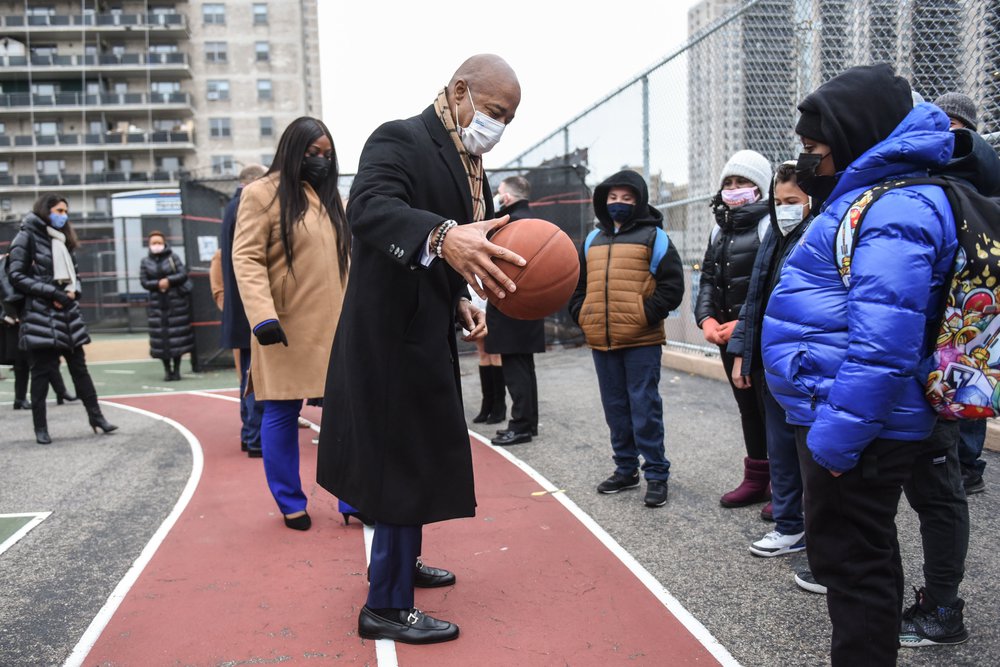NYC Education Department Quietly Opens Door For Teachers To Allow More Remote Learning
Jan. 14, 2022, 6:41 p.m.
The policy does not specify what other circumstances will qualify students for remote learning, including whether they are staying home out of caution during the recent COVID surge. But it could pave the way for educators to allow more students to learn remotely.

The New York City Department of Education has updated its attendance policy to give educators discretion on allowing students to learn remotely during the current COVID surge, and to count those students as present for attendance purposes — a possible sign of movement towards a remote option for all students.
The policy update appeared online Friday afternoon without any formal announcement, a day after Mayor Eric Adams acknowledged the school system is considering a remote option.
[Update: “Our schools are the safest places for young people to be, and we are focused on working with our labor partners, students, and families regarding how we can be the most flexible in providing an education to every student. Broadening who can participate in our asynchronous learning structure reflects the hard work many educators are already doing and this will make attending school simpler for families,” DOE spokesperson Nathaniel Styer said in a statement Friday night.]
The change follows growing protest over Adams' refusal to entertain the notion and a sharp decline in student attendance since COVID cases surged over the winter holidays.
Attendance was 77.09% across the system Thursday, meaning more than 214,800 students out of the system's 938,000 students missed class. In pre-pandemic times, attendance averaged 91% across the system for the 2019 school year.
The DOE previously spelled out specific circumstances wherein it would allow remote learning: a full classroom or school closure, a positive test result, Election Day and snow days.
Now, the updated policy says “staff may provide asynchronous remote instruction and Office Hours … to students who are absent for reasons other than those stated above…” based on staff willingness and the approval of their supervisors. These students may also be counted as remotely present for class for attendance purposes.
The policy, which reflects language in a memo sent to principals this week by First Deputy Chancellor Dan Weisberg, does not specify what other reasons will qualify students for remote learning, including whether they are staying home out of caution during the recent COVID surge. But it could pave the way for educators to allow more students to learn remotely — and to not penalize those who choose to learn at home by counting them absent.
The DOE did not immediately respond to a request for comment Friday evening.
Schools Chancellor David Banks has appeared to support a remote learning system involving livestreaming from classes, though the city’s agreement with the United Federation of Teachers union prohibits that arrangement because of logistical and instructional difficulties.
Chalkbeat reported that, during a meeting with parent leaders this week, Banks mused, “‘Can we turn that agreement around and just do a livestream and let kids just participate in the class?’”
The UFT also did not immediately respond to a request for comment.
After days of pressure from a vocal contingent of educators and students, Adams abruptly pivoted this week on the question of remote learning as a temporary option during the COVID surge. He has long insisted that in-person learning was crucial for students, citing the many children who rely on social services and food provided by schools, as well as the families who count on open school buildings for stability.
But on Thursday, the mayor said he was in talks with the UFT to figure out a temporary solution.
“We do have to be honest that there's a substantial number of children for whatever reason, parents are not bringing them to school," Adams said. "I have to make sure children are educated."